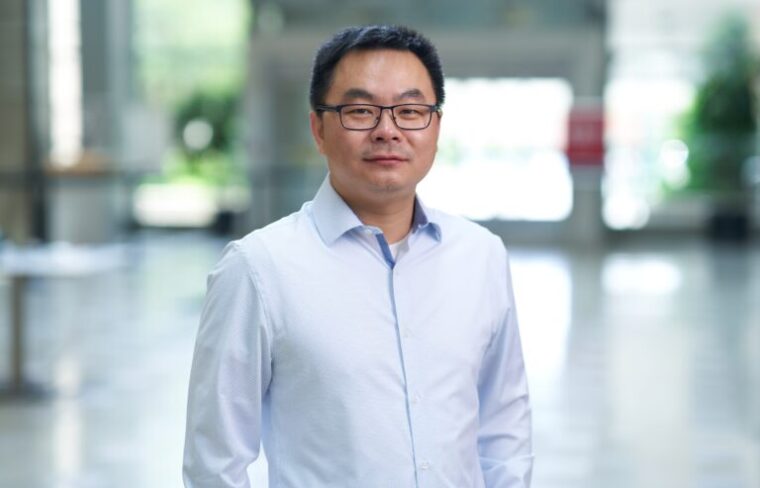
Tristan Qingyun Li, PhD
Assistant Professor, Genetics and Neuroscience
- Email: qingyunli@nospam.wustl.edu
Tristan Li Lab | Google Scholar Profile | ResearchGate Profile | Neurotree
Bio
Dr. “Tristan” Qingyun Li obtained his PhD from Duke University, where he studied the molecular mechanisms governing neuronal diversification in the sensory system. He then pursued postdoctoral training under the late Dr. Ben Barres and subsequently with Dr. Tony Wyss-Coray at Stanford University. During this time, he developed a keen interest in understanding the heterogeneity and function of microglial cells in the brain. He authored one of the most highly cited review articles on microglia and brain macrophages (Li et al. Nature Reviews Immunology. 2018). His work employing an unbiased deep single-cell RNA sequencing approach to dissect transcriptomic states of brain immune cells has contributed to benchmarking the current framework of microglial heterogeneity in the developing and aging brain (Li et al. Neuron. 2019. Tabula Muris Consortium. Nature.2018. Tabula Muris Consortium. Nature. 2020). Dr. Li started his own lab as an Assistant Professor of Neuroscience and Genetics at Washington University in St. Louis School of Medicine in 2020. He is also affiliated with the Hope Center for Neurological Disorders, the Brain Immunology and Glia (BIG) Center, and the Center of Regenerative Medicine.
Research
Microglia and other related immune cells are increasingly recognized to be essential players in central nervous system function and almost all neurological diseases. As we gain more knowledge about microglial biology—one of the fastest growing fields at the nexus of neuroscience, immunology and hematopoiesis, numerous fundamental questions remain to be answered, such as: How is microglia fate specified? How do microglia develop? How heterogeneous are microglia? How do microglia age? How do microglia contribute to brain development, aging and disease?
The Li laboratory is broadly interested in neuroimmunology with a focus on microglial biology. Particularly, the lab is interested in combining cutting-edge single-cell genomic technologies with in vitro and in vivo genetic, molecular and cellular tools to investigate microglial development, heterogeneity and mechanisms of neuro-immune interactions underlying brain structure and disease. We try to address two major questions: (1) how microglia (and other immune cells) are different in development, homeostasis and aging, and related to that, how these different populations of microglia interact with other neural cells to control brain development and functioning; (2) how microglial fate is specified and diverged from other tissue macrophages during early embryonic development. By studying these questions, the overarching goal is to gain a better understanding of microglial functions in the establishment of the nervous system, as well as how changes in these functions contribute to neurological diseases.
Selected Publications
- Barclay KM, Abduljawad N, Cheng Z, Kim MW, Zhou L, Yang J, Rustenhoven J, Mazzitelli JA, Smyth LCD, Kapadia D, Brioschi S, Beatty W, Hou J, Saligrama N, Colonna M, Yu G, Kipnis J, Li Q. An inducible genetic tool to track and manipulate specific microglial states reveals their plasticity and roles in remyelination. Immunity. 2024 Jun 11;57(6):1394-1412.e8. doi: 10.1016/j.immuni.2024.05.005. Epub 2024 May 30. PubMed PMID: 38821054; NIHMSID:NIHMS1999302.
- Li Q. TIMely connections: APOE4, aging, and Alzheimer’s. Immunity. 2024 Jan 9;57(1):8-10. doi: 10.1016/j.immuni.2023.12.015. PubMed PMID: 38198855.
- Vasek MJ, Mueller SM, Fass SB, Deajon-Jackson JD, Liu Y, Crosby HW, Koester SK, Yi J, Li Q, Dougherty JD. Local translation in microglial processes is required for efficient phagocytosis. Nat Neurosci. 2023 Jul;26(7):1185-1195. doi: 10.1038/s41593-023-01353-0. Epub 2023 Jun 5. PubMed PMID: 37277487; PubMed Central PMCID: PMC10580685.
- Li Q, Haney MS. The role of glia in protein aggregation. Neurobiol Dis. 2020 Sep;143:105015. doi: 10.1016/j.nbd.2020.105015. Epub 2020 Jul 12. Review. PubMed PMID: 32663608.
- A single-cell transcriptomic atlas characterizes ageing tissues in the mouse. Nature. 2020 Jul;583(7817):590-595. doi: 10.1038/s41586-020-2496-1. Epub 2020 Jul 15. PubMed PMID: 32669714; PubMed Central PMCID: PMC8240505.
- Li Q. Overseeing Memory Circuits by NFIA: New Face In Astrocytes. Neuron. 2020 Jun 17;106(6):878-880. doi: 10.1016/j.neuron.2020.05.027. PubMed PMID: 32553203.
- Li Q, Cheng Z, Zhou L, Darmanis S, Neff NF, Okamoto J, Gulati G, Bennett ML, Sun LO, Clarke LE, Marschallinger J, Yu G, Quake SR, Wyss-Coray T, Barres BA. Developmental Heterogeneity of Microglia and Brain Myeloid Cells Revealed by Deep Single-Cell RNA Sequencing.Neuron. 2019 Jan 16;101(2):207-223.e10. doi: 10.1016/j.neuron.2018.12.006. Epub 2018 Dec 31. PubMed PMID: 30606613; PubMed Central PMCID: PMC6336504.
- Single-cell transcriptomics of 20 mouse organs creates a Tabula Muris. Nature. 2018 Oct;562(7727):367-372. doi: 10.1038/s41586-018-0590-4. Epub 2018 Oct 3. PubMed PMID: 30283141; PubMed Central PMCID: PMC6642641.
- Li Q, Barres BA. Microglia and macrophages in brain homeostasis and disease. Nat Rev Immunol. 2018 Apr;18(4):225-242. doi: 10.1038/nri.2017.125. Epub 2017 Nov 20. Review. PubMed PMID: 29151590.
See a complete list of Dr. Li’s publications on PubMed.
Education
2002-2006 BS, Biological Sciences, China Agricultural University, Beijing
2008-2015 PhD, Biology, Duke University, Durham, NC (Advisor: Pelin Volkan)
2015-2019 Postdoctoral Fellow, Stanford University, Stanford, CA (Advisors: Ben Barres, Tony Wyss-Coray)
Selected honors
2011-2012 Howard Hughes Vertical Integration Partnership Program Fellowship
2014 Departmental Semester Fellowship, Duke University
2014 Ray J. Tysor Graduate Fellowship, Duke University
2016 Dean’s Fellowship, Stanford University

